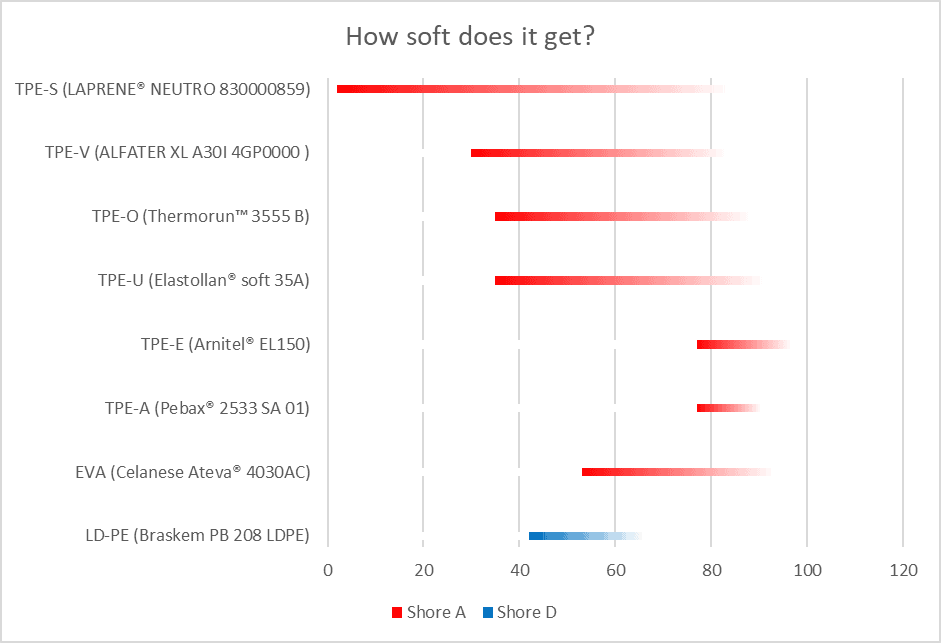If you need an injection mouldable rubbery material you have many options to choose from. In addition to the members of the TPE family (TPE-S, TPE-V, TPE-O, TPE-A and TPE-E), some conventional plastics, such as LD-PE or EVA, can be considered rubbery or at least soft. However, if you need the material to be considerably soft and flexible, your options are more limited.
The softness/hardness of the material is usually expressed by a value measured with a device called a durometer. This video provides a good explanation of how the device works and the difference between Shore A and Shore D values.
What hardness values are available for each plastic material type?
The chart on page 21 of this presentation shows the hardness differences between the members of the TPE family.
I wanted to see if it is possible to find the softest grade available of each material using campusplastics, matweb and materialdatacenter databases. It was not as easy as I had hoped. Anyway, the results are quite in line with the presentation above and my earlier understanding.
If you know a material that would exceed these values, please give me a hint and I’ll update the chart.
The members of the TPE-S family offer the best flexibility. TPE-O and TPE-U came to a bit closer to TPE-V than I had expected. TPE-E and TPE-A are clearly on a different level.
Please note that Shore D values are used in the case of LD-PE. Shore D 42 corresponds approximately to Shore A 82. Here you can find a useful comparison chart for the conversion between Shore A and Shore D. Due to the differences in the testing procedure and the material characteristics, however, components with a hardness of Shore A 85 and Shore D 40 might have very different touch and feel.
Components with a hardness of Shore A 35 and less are very flexible. They might not be able to carry their own weight and can be difficult to assemble.
At the other end of the scale, it is questionable if materials with hardness outside the Shore A scale, higher than Shore D 60, can be considered rubbery or even elastic.
Please remember that the elastomers creep just like any other plastics. If you stretch them for a longer period of time, they will not remember their original length and shape. Considerable stretching should be only temporary.
Softness/hardness is only one property to consider in the material selection process. Chemical resistance, UV-resistance, service temperature, etc. must be taken into account as well. Plasticprop.com can hopefully help you in this.
Thank you Jenni Ahola for your great help with the material search.
